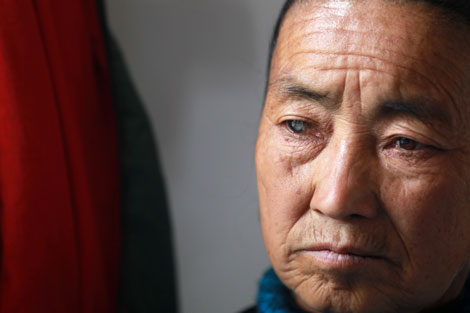Climate of public opinion
Updated: 2011-11-16 07:23
By Zhao Yinan (China Daily)
|
|||||||||
BEIJING - The climate of public opinion will be monitored in environmental protection campaigns, according to a senior official.
Public satisfaction will be taken into account in a comprehensive system to assess the performance of local governments on environmental protection, said Bie Tao, deputy director of the policies, laws and regulations department of the Ministry of Environmental Protection.
The system will be different from that currently in operation, which focuses on whether local governments have fulfilled preset pollution reduction targets.
Zhou Shengxian, the environment minister, confirmed that the ministry is revising air quality evaluation standards, aiming to bring them in line with internationally recognized appraisal systems.
"But (reaching the international standards) will be a gradual process, and won't be achieved all at once," Zhou told a high-level conference on the environment and development on Tuesday.
Under the existing system, officials are not promoted if they miss the preset targets. Consequently, local officials concentrate on figures and are "poorly motivated" to address public concern, Bie said.
"Local governments endeavor to reduce carbon emissions, but whether their work has made any difference to people's lives is open to debate," he said.
The ministry has proposed that public opinion should be part of the evaluation system in the Environmental Protection Law.
"Opinions from students, professionals, and non-governmental organizations should be valued as a necessary supplement," Bie said.
The proposal appeared to address the mismatch between public discontent over the environment and figures indicating an improvement in air quality released by the government.
A string of hazy days in Beijing last month, despite the official "slightly polluted" air-quality rating, aroused widespread public discussion on the difference between official figures and what people were actually experiencing.
Sulfur dioxide emissions have been reduced by 14.29 percent from 2005 to 2010, while chemical oxygen demand, a gauge of water pollution, has been cut by 12.45 percent over the same period, according to the National Development and Reform Commission.
"Despite the figures, do people feel satisfied with the air and water quality?" Bie asked.
A researcher explained why people are skeptical of official figures.
"Thanks to the efforts spent on improving air quality, the intensity of larger particulates has been reduced significantly, but the number of smaller particulates, which are more closely connected to hazy weather, has been on the rise, and that is why official figures are at odds with public opinion," said Wang Yuesi, a researcher with the Chinese Academy of Sciences.
Research conducted over a decade by the academy has shown that the intensity of PM10 - particulate matter smaller than 10 microns - has been declining by 2 to 3 percent annually.
However, matter smaller than 2.5 microns has increased 3 to 4 percent every year.
Yang Yang, a program officer from Friends of Nature, welcomed the proposal of adding public opinion to the evaluations but said it lacks detail.
Polluting factory
Commenting on the reluctance of local governments to shut polluting plants, Bie said it might be due to local governments and plants being "interconnected".
Earlier this month, a chemical plant in the city of Qujing in Southwest China's Yunnan province, was widely criticized for resuming operations before it had cleaned up more than 5,000 tons of chromium compound, a highly toxic heavy metal, that it had dumped near the city.
Local officials said that the factory had resumed operations to get the money to fund detoxification.
But Bie said he believes that the local government was "behind" the polluting factory and had acquiesced in the resumption of operations.
Li Jing contributed to this story.











